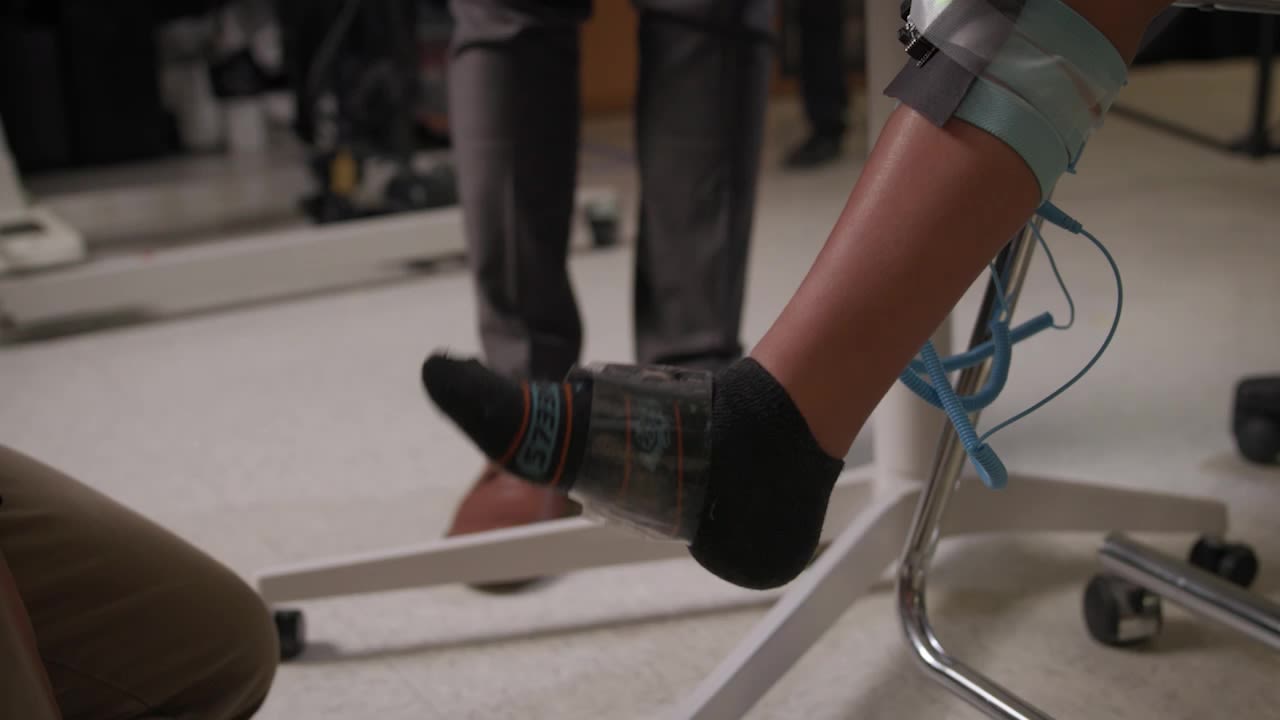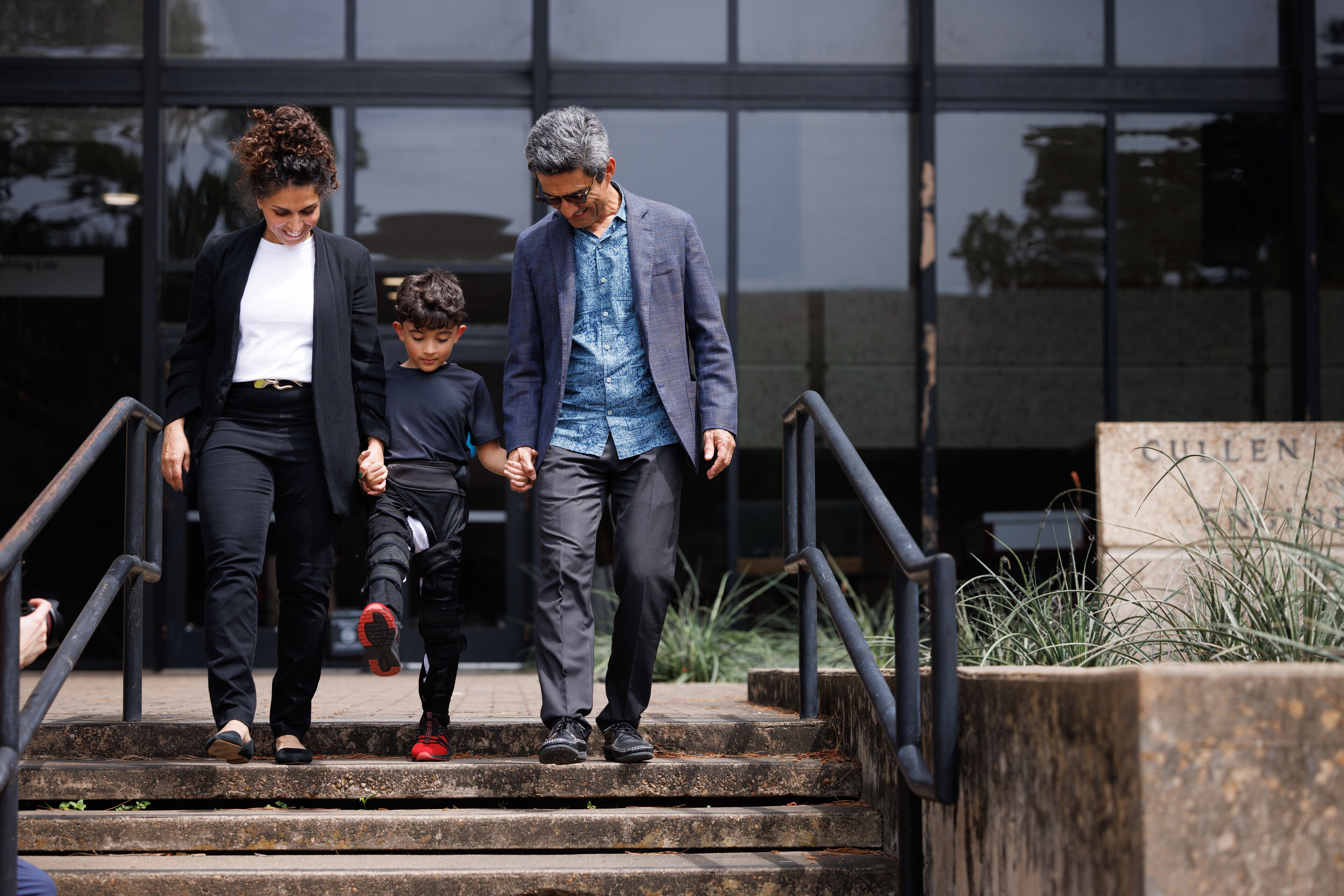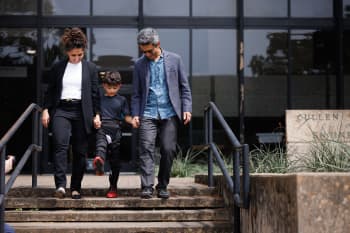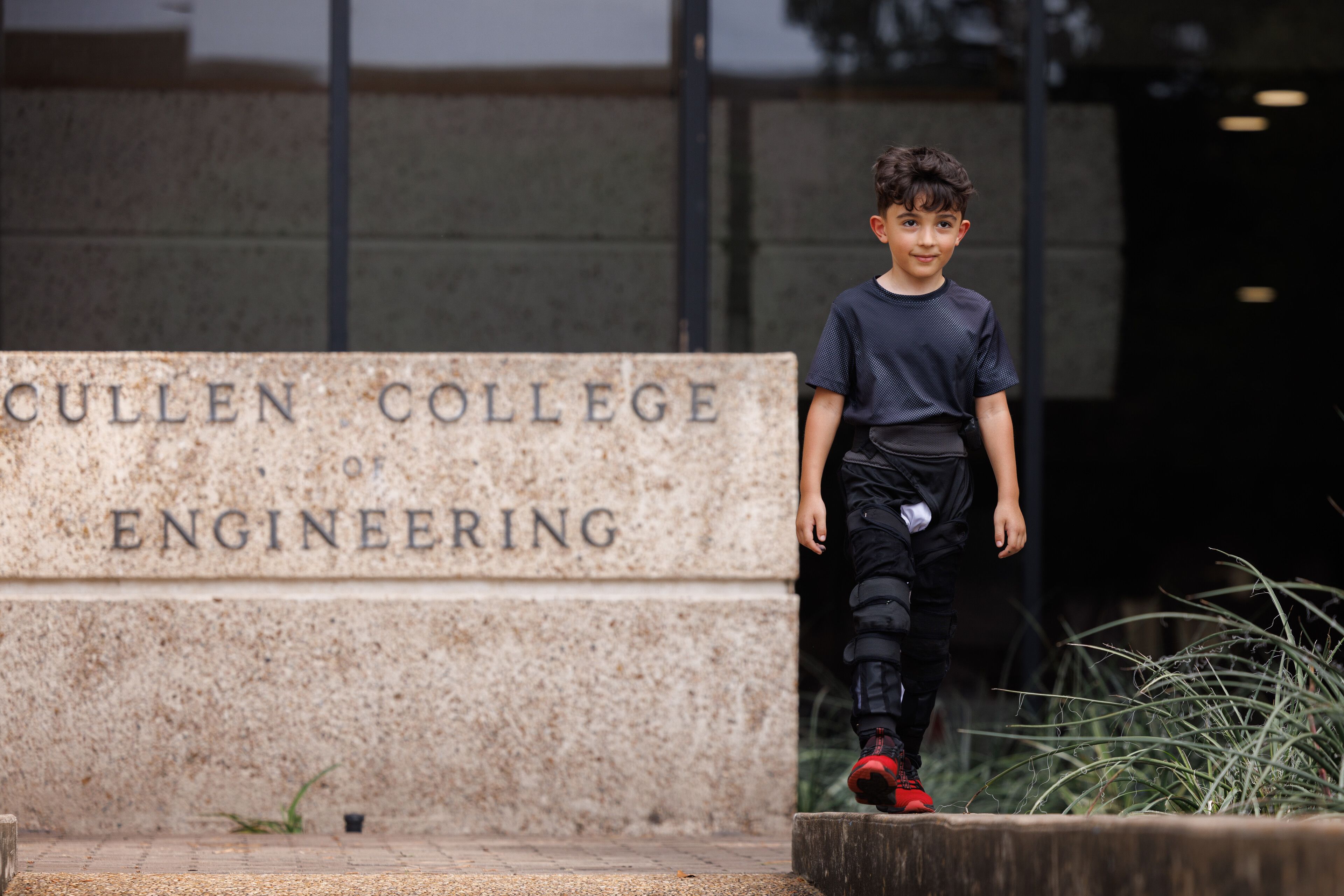UH BRAIN, TIRR Memorial Hermann Develop First Wearable Pediatric Soft Exoskeleton Made of Smart Materials
Team Ushers in a New Era of Mobility for Children with Cerebral Palsy

Just one look at the next-generation lightweight, soft exoskeleton for children with cerebral palsy reveals the powerful role technology can play in solving global challenges and improving lives.
Built to help children walk, the MyoStep addresses motor impairments that severely restrict children’s participation in physical activities, self-care and academic pursuits, leading to developmental delays, social isolation and reduced self-esteem. It is lightweight, discreet, made of smart materials and wearable technology, and tailored to fit seamlessly into the lives of children and their families.
The MyoStep soft exoskeleton is being introduced in Electron Devices Magazine by a team from the NSF UH Building Reliable Advances and Innovation in Neurotechnology (BRAIN) Center, an Industry–University Cooperative Research Center (IUCRC) and TIRR Memorial Hermann.
“The MyoStep project represents a significant advancement in the field of pediatric mobility aids, particularly for children with cerebral palsy,” said Jose Luis Contreras-Vidal, director of the NSF BRAIN Center and Hugh Roy and Lillie Cranz Cullen Distinguished Professor of Electrical and Computer Engineering.
“By integrating cutting edge technologies such as artificial muscles, smart fabrics, and a comprehensive sensor network, MyoStep offers a promising solution to the challenges faced by existing exoskeletons,” he said.
Helping Children Take the Next Step
Cerebral palsy is a common neurological disorder in children that affects motor skills, including the ability to walk, and it occurs in 1 to 4 out of every 1,000 births worldwide.
“Although exoskeletons offer some degree of assistance and stability, they often prove impractical for regular daily use,” said Contreras-Vidal. “These devices typically fail to accommodate a child’s growth and remain too heavy. By integrating cutting edge technologies such as artificial muscles, smart fabrics, and a comprehensive sensor network, MyoStep offers a promising solution to the challenges faced by existing exoskeletons.”
Gerard Francisco, M.D., with McGovern Medical School at UTHealth Houston and TIRR Memorial Hermann
Gerard Francisco, M.D., with McGovern Medical School at UTHealth Houston and TIRR Memorial Hermann
The need for exoskeletons that promote healthy musculoskeletal development and can adjust as children grow prompted Contreras-Vidal to convene a cross-disciplinary team with clinical partner Gerard Francisco, MD, professor and The Wulfe Family Chair of Physical Medicine and Rehabilitation at UTHealth Houston and medical officer at TIRR Memorial Hermann.
The team includes experts in biomechanics and orthopedic surgery (Christopher J. Arellano, University of Arizona), medical officer at TIRR Memorial Hermann and from the IUCRC BRAIN at the University of Houston: costume design and technology (Paige A. Willson), industrial design (Elham Morshedzadeh and Jeff Feng), mechanical engineering (Francisco C. Robles Hernandez and Zheng Chen) electrical engineering students (Shantanu Sarkar, Aime J. Aguilar-Herrera and Lara Altaweel) and industrial design graduate student (Hannah Ritchie).
“This research represents a groundbreaking step forward in how we think about mobility and independence for children with cerebral palsy,” said Francisco.
A team of researchers in the lab of Jose Luis Contreras-Vidal installs sensors in a pediatric “SoftExo” device, designed in collaboration with Elham Morshedzadeh, director of the UH Health Design Lab in the Gerald D. Hines College of Architecture and Design.
A team of researchers in the lab of Jose Luis Contreras-Vidal installs sensors in a pediatric “SoftExo” device, designed in collaboration with Elham Morshedzadeh, director of the UH Health Design Lab in the Gerald D. Hines College of Architecture and Design.
Elham Morshedzadeh, director of the UH Health Design Lab in the Gerald D. Hines College of Architecture, fits the "SoftExo" brace on her son Arman. Aime Aguilar, electrical engineering research assistant, assists.
Elham Morshedzadeh, director of the UH Health Design Lab in the Gerald D. Hines College of Architecture, fits the "SoftExo" brace on her son Arman. Aime Aguilar, electrical engineering research assistant, assists.
Innovations in Mobility
The team tailored the MyoStep to be lightweight, discreet and tailored to fit seamlessly into the lives of children and their families. The wireless sensor network, embedded inside the smart and flexible fabrics, is the backbone of the suit, collecting and sending real-time data about the user’s movements so the device knows when to assist their arms or legs.
It also includes safety features such as temperature monitoring and emergency shut-off mechanisms.
Elham Morshedzadeh checks a sensor inside the pediatric “SoftExo” device, designed in collaboration with the lab of Jose Luis Contreras-Vidal.
Elham Morshedzadeh checks a sensor inside the pediatric “SoftExo” device, designed in collaboration with the lab of Jose Luis Contreras-Vidal.
All electronics and actuators are fully isolated from the user’s skin to prevent direct contact and reduce the risk of irritation or discomfort. Integrated temperature sensors continuously monitor the device’s surface temperature, automatically deactivating the system if it exceeds safe limits to protect against overheating or burns.
The various sensors in the network communicate with each other using Bluetooth technology.
“What makes the MyoStep project so compelling is that it’s not just about the technology: it’s about restoring confidence, function, and hope. This kind of innovation has the potential to dramatically improve quality of life, helping children move through the world with greater ease and dignity,” said Francisco.

Next Steps
Coordination across the ankle, knee and hip was vital in producing the prototype. Continually improving how the ankle moves could make walking more efficient, allowing children to use less energy to walk.
“The team is currently focused on enhancing ankle movement control using artificial muscles made from advanced smart materials, such as shape memory alloys, which contract with temperature changes and dielectric elastomers which respond to voltage,” said Contreras-Vidal. “These actuators work in conjunction with a multimodal sensor network, including EMG sensors to monitor muscle activations, and inertial measurement units to detect gait phases and joint angles.”
Muscles have been investigated for decades, but their actual behavior has not been successfully replicated with lightweight systems.
“To make this possible, there is a need for interdisciplinary systems and disciplines to fully execute the physics of muscle gesticulations,” said Contreras-Vidal.
This work has been supported in part by the IEEE Electron Device Society’s Humanitarian Fund.
Testing the pediatric “SoftExo” system in front of the Cullen College of Engineering.
Testing the pediatric “SoftExo” system in front of the Cullen College of Engineering.
A team of researchers in the lab of UH Professor Jose Luis Contreras-Vidal collects data from sensors in a pediatric “SoftExo” device.
A team of researchers in the lab of UH Professor Jose Luis Contreras-Vidal collects data from sensors in a pediatric “SoftExo” device.
Testing the pediatric “SoftExo” system in front of the Cullen College of Engineering.
Testing the pediatric “SoftExo” system in front of the Cullen College of Engineering.
Testing the pediatric “SoftExo” system in front of the Gerald D. Hines College of Architecture and Design.
Testing the pediatric “SoftExo” system in front of the Gerald D. Hines College of Architecture and Design.










